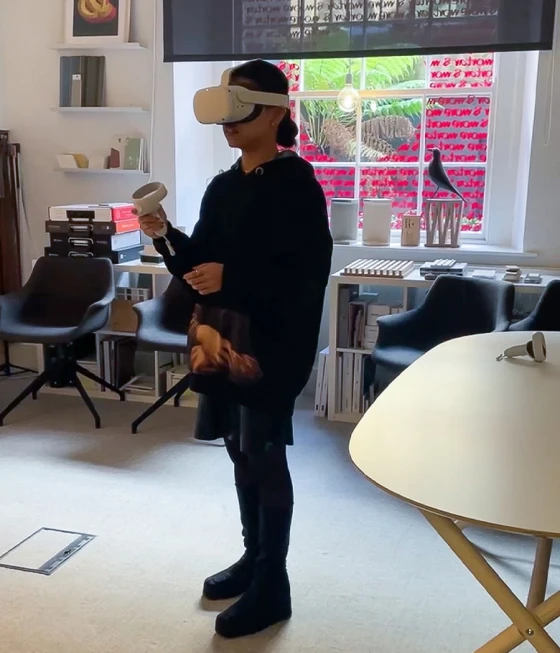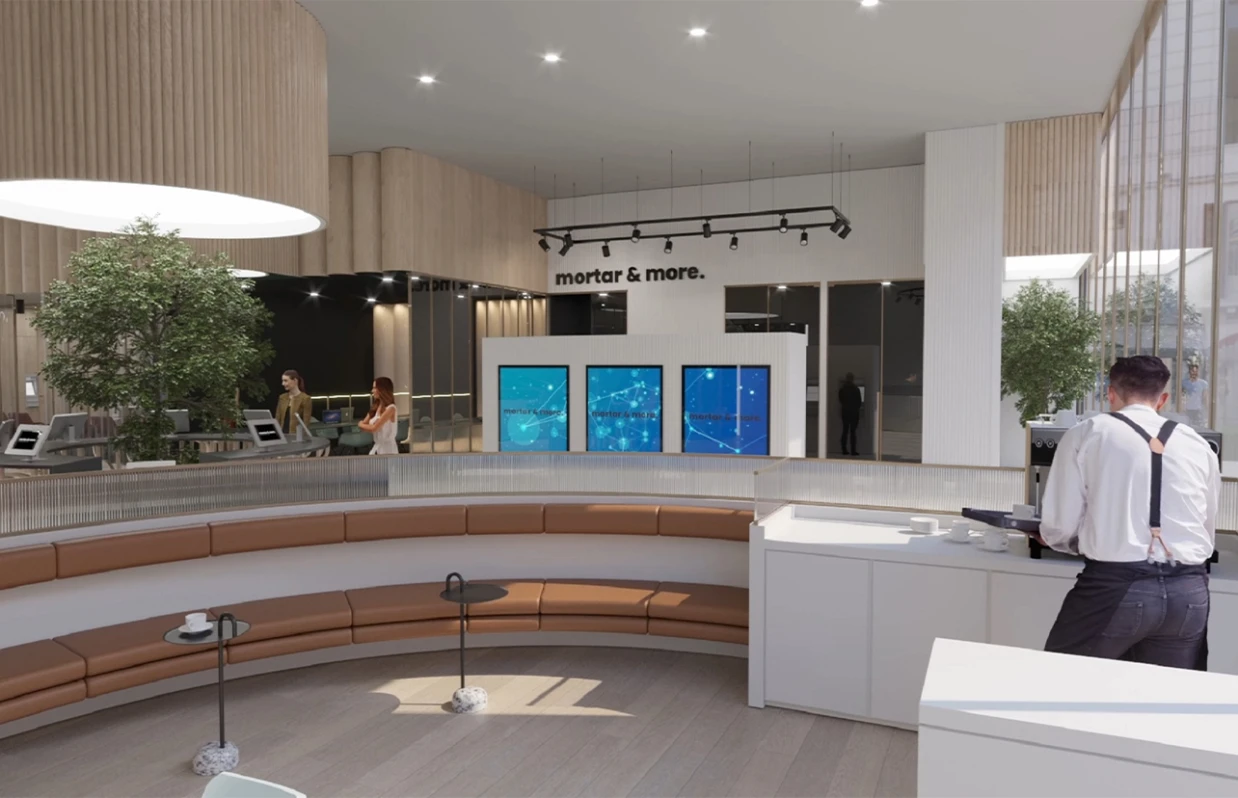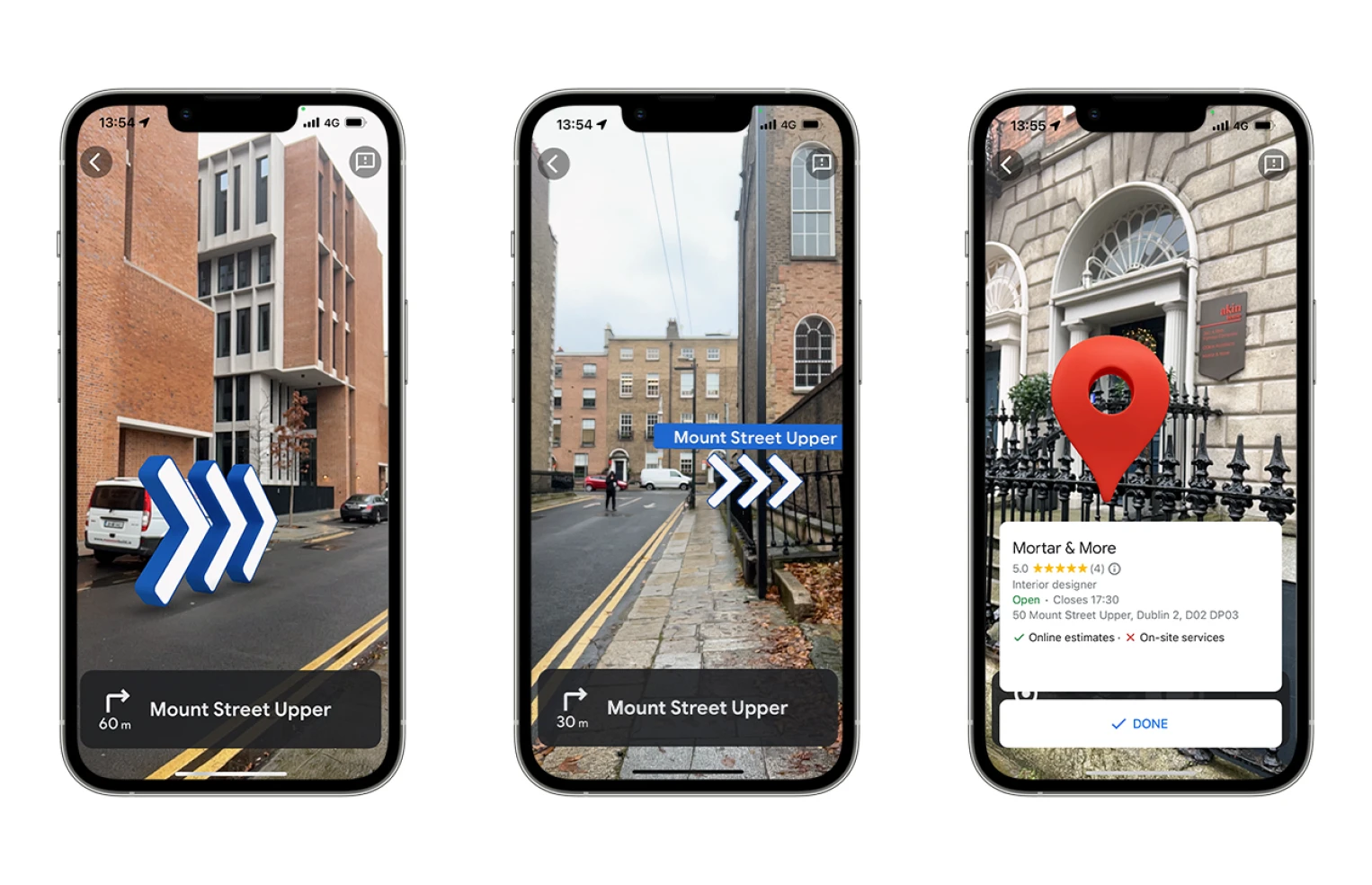M&M team stepping into the world of Virtual Reality with Quest 2.
XR: An Introduction
Insights
XR, meaning Extended Reality, is the umbrella term for VR, AR and MR (virtual reality, augmented reality and mixed reality respectively). These emerging technologies enhance physical environments by superimposing digital elements with the real world.
VR is an immersive experience in a fictional virtual environment achieved by wearing a headset.
AR is when digital elements, such as holograms, have been overlaid on the actual physical setting. And MR combines virtual and real-world physical environments that have been computer-generated to create an immersive experience.


Still image of a VR walkthrough from our M&M Retail Banking & Meta project.
This evolving technology is gaining momentum and transforming how we see or navigate our everyday lives.
This evolving technology is gaining momentum and transforming how we see or navigate our everyday lives.
But it also has a very real impact on how we can deliver design solutions, integrate them into the physical environment and create more valuable experiences for brands.
The Metaverse is a digital platform where users can escape the physical world and explore new digital horizons without having to travel. By putting on a piece of equipment, the user is suddenly thrust into a beautiful world of someone’s imagination. Although in its infancy, there are many potential opportunities for brands as the Metaverse is here to stay. Different industries such as retail, healthcare and the auto industry have taken full advantage of VR’s capabilities and explored other possibilities to improve the user experience, and to help market their brand effectively. Meta has taken the opportunity to utilise other applications of the Quest and market it outside of being used in gaming by building a new metaverse platform called Meta Horizon. It’s an expanding virtual community that allows users to interact with one another using the VR headset and can be accessed anywhere in the world.

A demo of Google Maps Live View augmented experience
AR technology is infiltrating many industries twice as fast as VR, as it helps us perform tasks better and more efficiently in the real world. Take the IKEA app, for example – using a mobile device, you can place true-to-scale 3D models in your own space. There is also Google Maps, a location-based AR app, which puts digital directions on top of the real world and shows you which way to go. Snapchat filters are the most accessible and best examples of AR, especially among the younger generations.
MR is the best of both worlds. What seemed impossible years ago was only limited by our imagination.
We can attend concerts of singers who have passed by using holographic devices that project life-like three-dimensional performances. It’s a unique and fully immersive experience. MR is still in the early stages of implementation and will take time to reach consumers. However, investment in this technology is expected to rise this year, and the future of MR is not so distant.